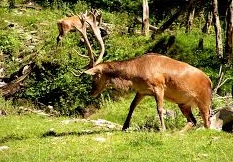Before entering fully into the definition of biotic factors, we are going to proceed to know the etymological origin of the two words that give it shape:
-Factors, first of all, derives from Latin. Specifically, it comes from “factor” which is the result of the sum of two components: the root “fact-”, which derives from the verb “do”, and the suffix “-tor”, which is used to indicate “author” or "agent".
-Biotics, secondly, has its etymological origin in Greek. Exactly it is made up of the following elements of said language: the noun “bios”, which means “life”, and the suffix “-tico”, which is used to indicate “relative to”.
The concept of factor can mention an agent or element that acts in conjunction with others. Biotic , for its part, is an adjective that refers to that which characterizes or refers to living organisms or that belongs to the biota (the set of flora and fauna of a place).
 With these ideas clear, it is easy to understand what biotic factors are. This is the name given to the living beings that inhabit a region, interacting with each other. These individuals must have certain physiological properties that allow them to live in a certain environment and reproduce successfully.
With these ideas clear, it is easy to understand what biotic factors are. This is the name given to the living beings that inhabit a region, interacting with each other. These individuals must have certain physiological properties that allow them to live in a certain environment and reproduce successfully.
Different types of relationships develop between biotic factors. Organisms, for example, can compete to access food .
Flora and fauna , in short, constitute the biotic factors of an ecosystem. All organisms that have life (plants, animals, bacteria, fungi) are considered biotic factors, as are their products. On the other hand, abiotic factors are those that arise through the physical and chemical components of the environment (soil, water, air, etc.).
In addition to all of the above, we have to establish that, based on the role they play in the environment, biotic factors can be of three fundamental types:
-Consumer organisms, which are living beings that feed on others. From these they obtain the organic matter they need and it should be noted that they are also called heterotrophs. Furthermore, they are divided into two groups: herbivores, which only eat plants, roots, seeds or vegetables; and carnivores, which are those who eat meat.
-Producing organisms, which are living beings that generate their own food. They also respond to the name autotrophs.
-Decomposer organisms, which feed on organic matter that is decomposing. In the same way, it should be noted that they are known as detritophages.
It is important to keep in mind that the subsistence of biotic factors requires the presence of abiotic factors. In a rural environment, for example, you can find sheep, chickens and cows, which are part of the biotic group. These animals need water, air and other abiotic factors to live. Therefore, it can be stated that abiotic factors, although they do not have life, are essential for the development and survival of living beings (biotic factors).
